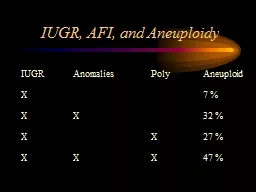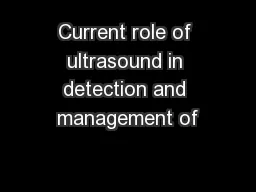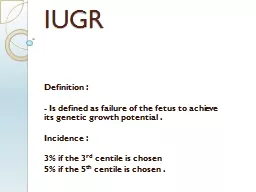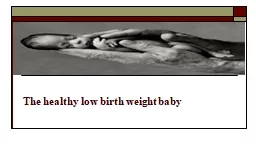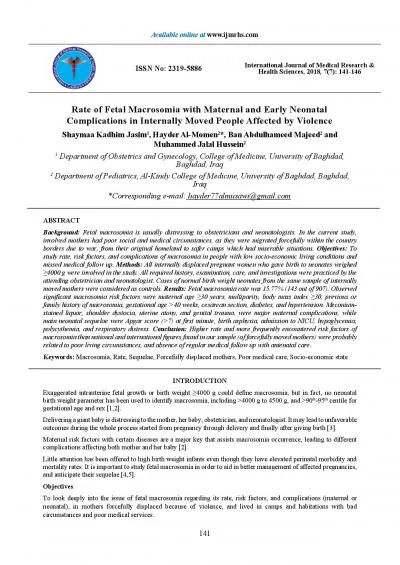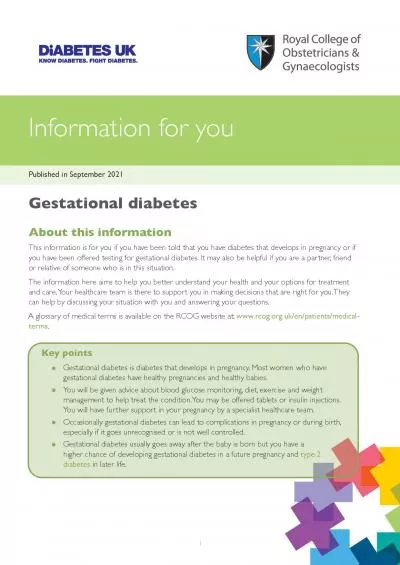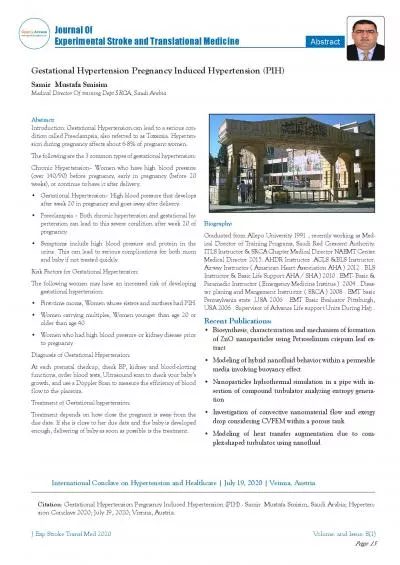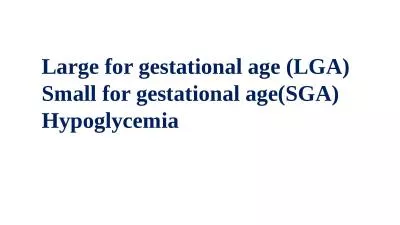PPT-IUGR Definition : Is a fetal weight that is below the 10th percentile for gestational
Author : morton | Published Date : 2022-07-26
Phases of fetal growth First 16 weeks mostly cellular hyperplasia 1632 weeks both hyperplasia and hypertrophy gt32 weeks mostly hypertrophy Thus early growth restriction
Presentation Embed Code
Download Presentation
Download Presentation The PPT/PDF document "IUGR Definition : Is a fetal weight that..." is the property of its rightful owner. Permission is granted to download and print the materials on this website for personal, non-commercial use only, and to display it on your personal computer provided you do not modify the materials and that you retain all copyright notices contained in the materials. By downloading content from our website, you accept the terms of this agreement.
IUGR Definition : Is a fetal weight that is below the 10th percentile for gestational: Transcript
Download Rules Of Document
"IUGR Definition : Is a fetal weight that is below the 10th percentile for gestational"The content belongs to its owner. You may download and print it for personal use, without modification, and keep all copyright notices. By downloading, you agree to these terms.
Related Documents


